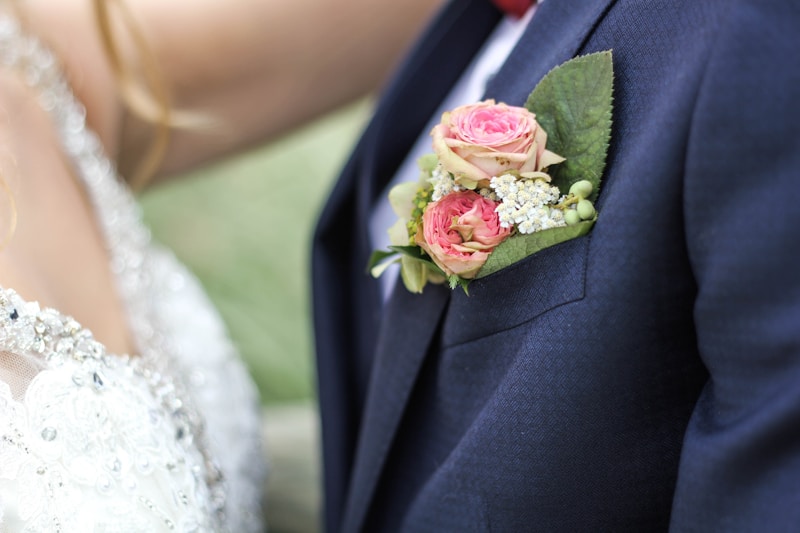Understanding Wedding Dress Terminology: A Comprehensive Guide for Brides-to-Be
Understanding Wedding Dress Terminology
Every bride dreams of her perfect wedding dress. However, navigating the world of bridal fashion can be overwhelming, especially with the plethora of terms used in the industry. This guide aims to demystify wedding dress terminology, helping brides-to-be confidently express their preferences and make informed decisions.
The Basics of Wedding Dress Terminology
To start, it's essential to understand some key terms that are frequently used in describing wedding gowns:
| Term | Definition |
| A-Line | A silhouette that is fitted at the bodice and flows out gently to the ground, resembling the shape of the letter 'A.' |
| Ball Gown | A classic style that features a fitted bodice and a full, voluminous skirt, perfect for a fairy-tale wedding. |
| Mermaid | A fitted dress that flares out at the knee, emphasizing the curves of the body. |
| Sheath | A slim-fitting dress that falls straight down from the neckline to the hem, offering a contemporary look. |
| Lace | A delicate fabric made of threads woven in complex patterns, often used for embellishments. |
Popular Styles and Silhouettes
Understanding the different styles and silhouettes will help you choose the right wedding dress for your body type and personal style. Below are some popular styles:
A-Line Dresses
A-Line dresses are a favorite among many brides due to their flattering silhouette. They are versatile and can work for various wedding themes, from a vineyard ceremony in California to a formal affair in New York City. This style suits almost every body type, providing comfort and elegance.
Ball Gown Dresses
If you crave a classic princess look, the ball gown is your best choice. With its dramatic skirt and fitted bodice, this style is particularly ideal for traditional weddings. Picture a grand ballroom setting where you twirl in a magnificent ball gown, creating unforgettable memories.
Mermaid Dresses
Mermaid dresses are perfect for brides who want to showcase their curves. The fitted styles hug the body, emphasizing an hourglass figure, making it a popular choice for outdoor weddings on the beach or intimate celebrations in lavish venues.
Sheath Dresses
For the modern bride, sheath dresses provide a minimalist aesthetic. They are ideal for simple garden ceremonies or elegant city hall weddings. Their sleek lines and understated elegance allow for various styling options, from boho chic to sophisticated glam.
Essential Fabrics and Embellishments
Wedding dress fabrics and embellishments play a significant role in the overall look and feel of your gown. Here are some terms to know:
| Fabric | Description |
| Chiffon | A lightweight, flowy fabric often used for layers and draped designs. |
| Organza | A thin, airy fabric that adds structure and volume, commonly layered to create dimension. |
| Silk | A luxurious fabric known for its soft sheen and fluid drape, often used in high-end gowns. |
| Tulle | A lightweight netting fabric used for creating voluminous skirts and delicate layers. |
Finding Your Perfect Dress
Now that you understand the terminology and styles, it’s time to find your dress. Here are a few tips to help in your journey:
Start Early
Start your search at least six to nine months before your wedding date. This timeline allows for customization and fittings, ensuring you have ample time to make your dress perfect.
Set a Budget
Understanding the price range of different styles is crucial. Dresses can vary widely in cost, so setting a budget will help narrow your options. Consider any additional costs for alterations and accessories, too.
Research and Try On
Before visiting bridal shops, research styles online and create a vision board. When trying on dresses, keep an open mind, as the dress you envision might not be the one you end up loving!
Conclusion and Final Tips
Understanding wedding dress terminology is essential for any bride-to-be. By familiarizing yourself with various styles, fabrics, and essential terms, you can streamline the dress-shopping process. Remember to start early, set a budget, and remain open to different styles during fittings.
In summary, as you search for your dream wedding dress, consider how each term applies to your vision and preferences. Don’t hesitate to ask for clarification from bridal consultants. And most importantly, trust your instincts—your wedding dress should reflect your unique style and personality.
Final Note: To enhance your search experience, use terms like “bridal dress styles,” “wedding gown fabrics,” and “bride dress shopping tips.” Happy dress hunting!